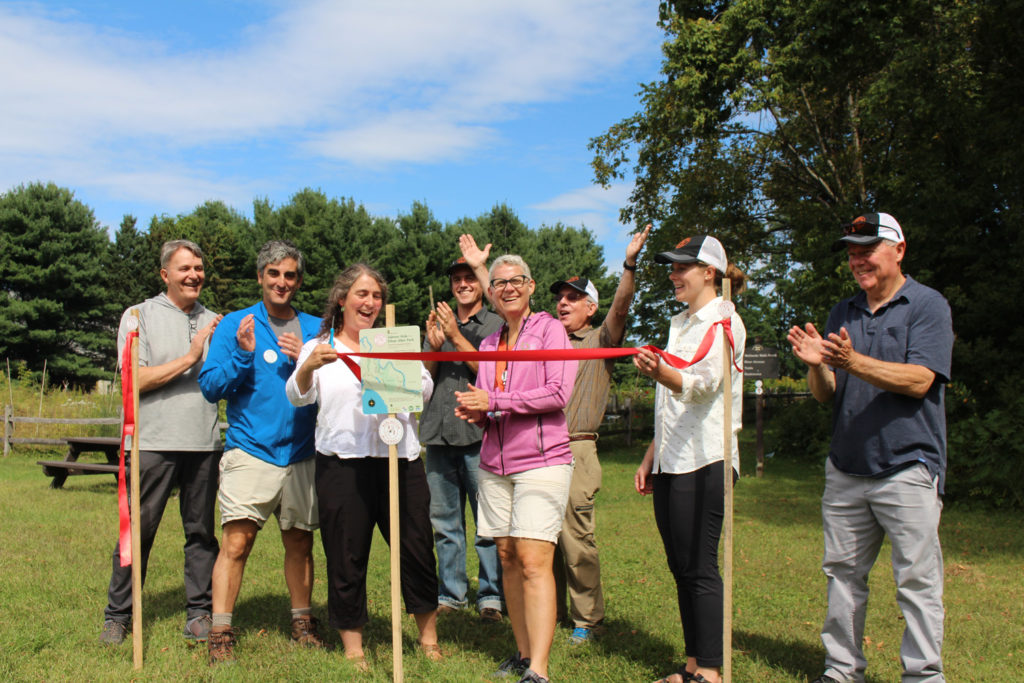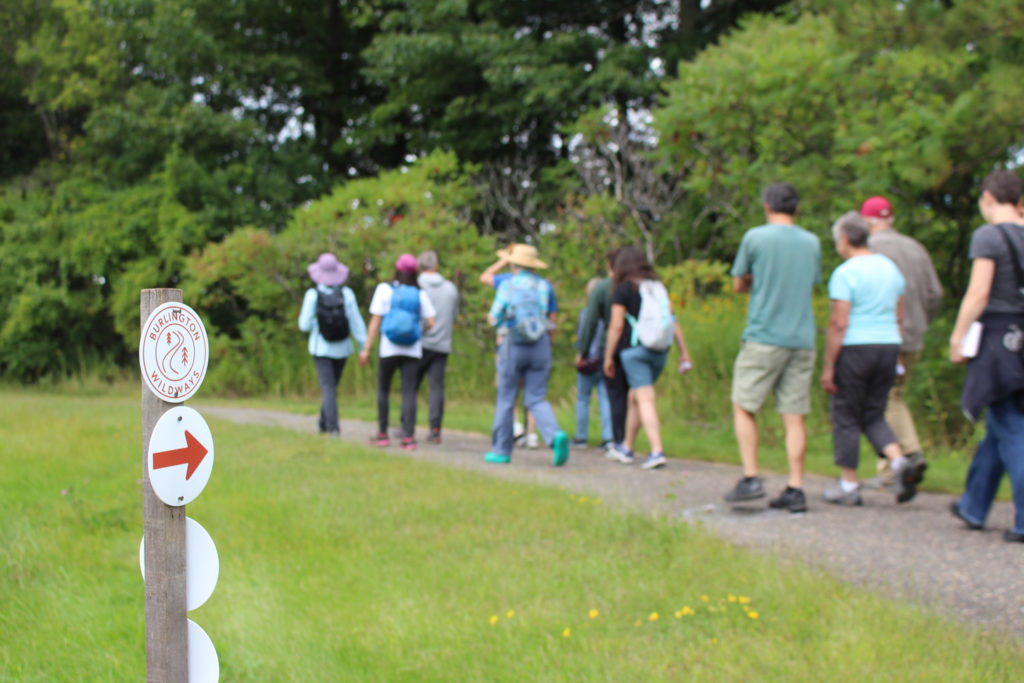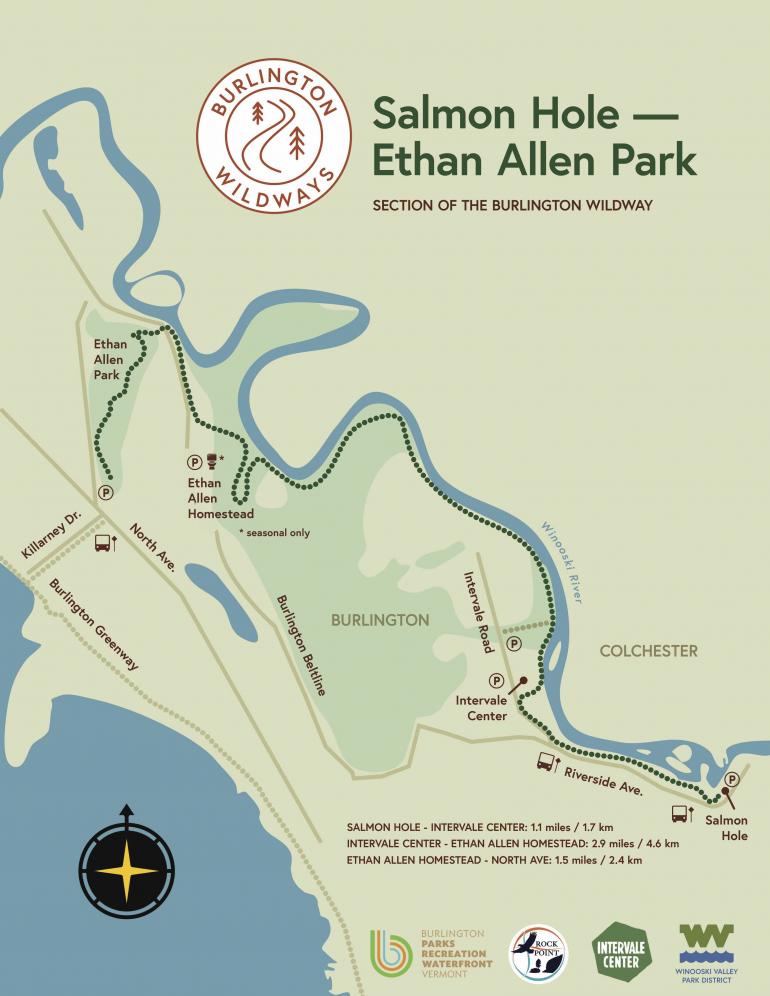The new Wildways Trail Opens

The first section of the Burlington Wildway, a new trail that connects the wild places of Burlington, Vermont, was opened on Saturday, September 7th.
After a welcoming ceremony and opening statment from the local Abenaki group that continues to engage with the area they’ve called “Winooskik”, partners from the City, BPRW, WInsooki Valley Park District, and the Interval spoke about the importance of the trail. All shared the sentiments that our beautiful natural areas should be shared by all.
Members of the steering committee of Burlington Wildways were on hand to open the trail and answer questions.
The ribbon-cutting formally opened the 5.5-mile Salmon Hole to Ethan Allen Park section of the Wildway.
“Burlington is the rare and special city that contains 50 percent open space, half of which is natural areas like woods and wetlands,” said Mayor Miro Weinberger. “As we grow and change as a city, we must continue to protect, steward, and connect these natural lands, and I am thankful to have Burlington Wildways as a partner in this vital work. I am so excited to be celebrating the opening of the first section of the Burlington Wildway, and with it, new access for all Burlingtonians to this magical part of our city. I look forward to seeing the Burlington Wildway become a beloved part of Burlington, and one that has the potential, over time, to be as much of a defining feature of our city as the Long Trail is for our state.”
Burlington Wildways was formed in 2017 as a partnership of the city’s Department of Parks, Recreation & Waterfront; Winooski Valley Park District; Rock Point (Episcopal Diocese of Vermont); and the Intervale Center—with support from the City Council and Burlington Conservation Board.
After the ceremony, groups divided to explore the trail. One group headed west with city naturalist Alicia Daniel for an easy hike north along the Wildway exploring “bedrock to birds” through Ethan Allen Park, or head south on the wildway to explore the connection to the Intervale Center and Salmon Hole.
Creating Connections
Many American cities are about 10% open space. Burlington holds a remarkable 49% open space, with half of this as natural woodlands and wetlands—including many short sections of trail. “However, for decades, open and natural lands in Burlington have been a patchwork owned by a diversity of institutions which have not historically worked to connect these lands for citizens and wildlife,” said Dan Cahill, city land steward and Wildways steering committee member. “Today is an important step in a new direction for a more collaborative approach to how we manage our natural lands.”
The new trail begins on the Winooski River at Salmon Hole Park and follows the river into the Intervale. At Ethan Allen Homestead, it heads north, on the Route 127 bike path, and crosses into Ethan Allen Park. “Many landowners and organizations in the city have shared values of public access, well marked trails and good stewardship—but to achieve these goals we must work together,” said Cindi Wight, Director of Burlington Parks, Recreation and Waterfront.
“Burlington is an ecologically rich, wild and beautiful city—from towering floodplain forests to lakeshore sand dunes,” said Zoe Richards, director of Burlington Wildways. “We’re excited to be opening the Wildway—connecting existing stretches of trail with new signs that will guide walkers and other visitors across a diversity of landscapes owned by many landowners.”
A key goal of Burlington Wildways is to identify and protect corridors for wildlife, protect rare plants, and assess the ecological status of large regions of the city. “Viewing our practices around this as a group—looking at the whole landscape instead of individual parcels by ownership—has been valuable,” said Lauren Chicote, program director for Winooski Valley Park District.
The new trail is part of a larger vision and effort by Burlington Wildways to identify and protect valuable natural areas in the city. Better conservation of these lands will enhance their ability to provide flood protection, cooling shade in the summer and carbon sequestration. “It’s crucial that we reduce and eliminate redundant, poorly designed and inappropriate trails in some areas that have adverse effects on ecology and wildlife,” said Rev. Craig Smith, a leader at Rock Point which is anticipated to be part of a future section of the Wildway, connecting from the Intervale to the shore of Lake Champlain. The city is also home to many large mammals such as bobcat, grey and red fox, mink, otter and deer.
There is so much to love about the open land in Burlington. “We are confident that by working together to create well-signed, ecologically sensitive and easily discovered trails in Burlington, more of our citizens will feel comfortable exploring our natural areas,” said Patrick Dunseith, land manager for the Intervale Center.




